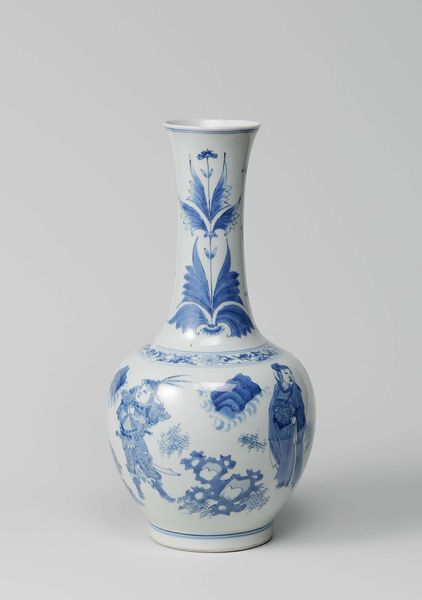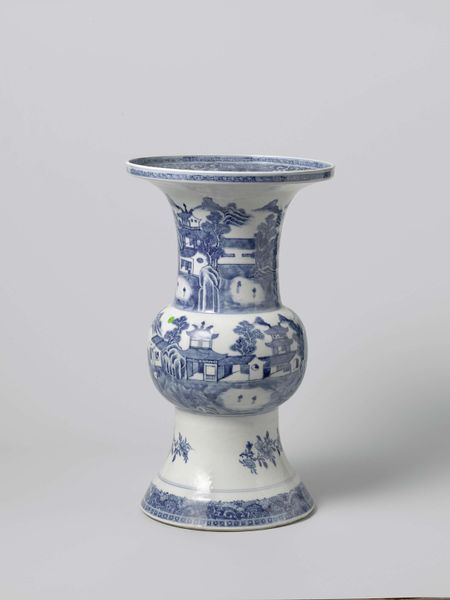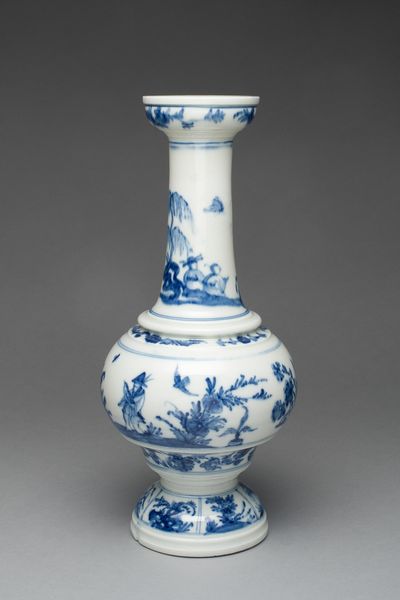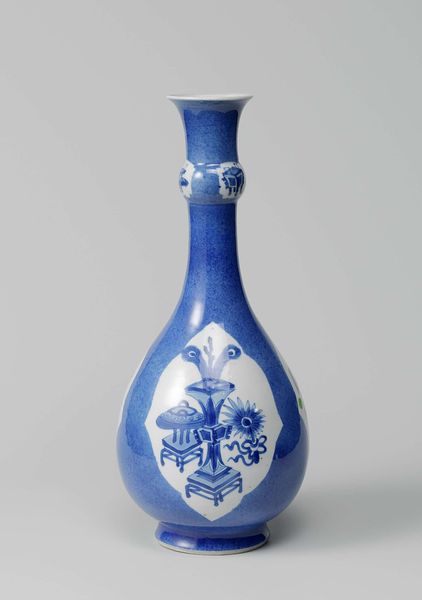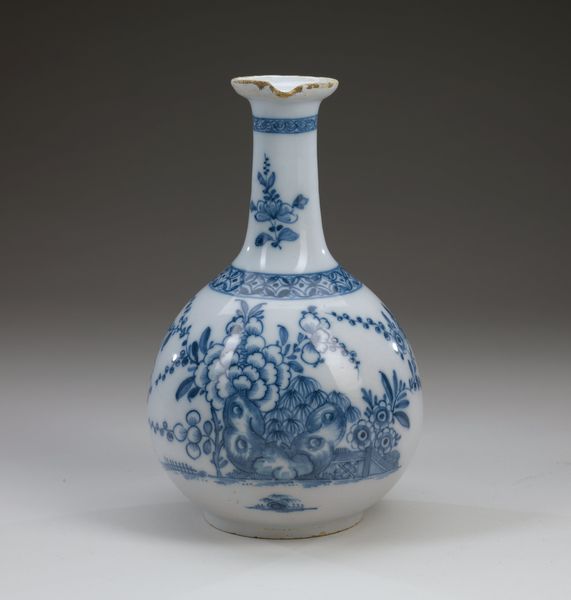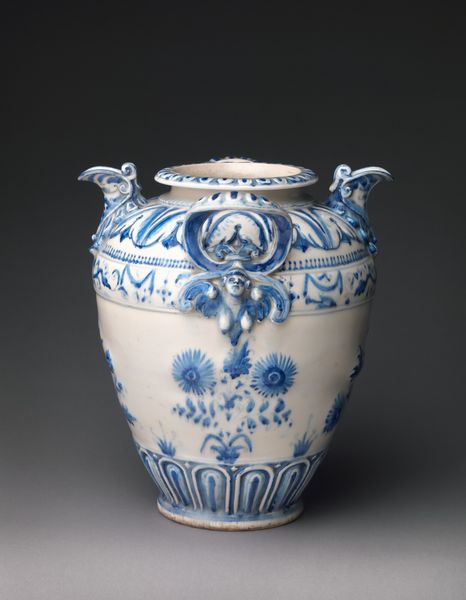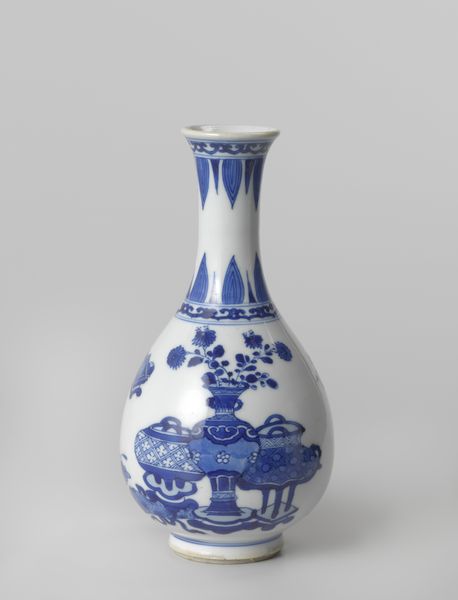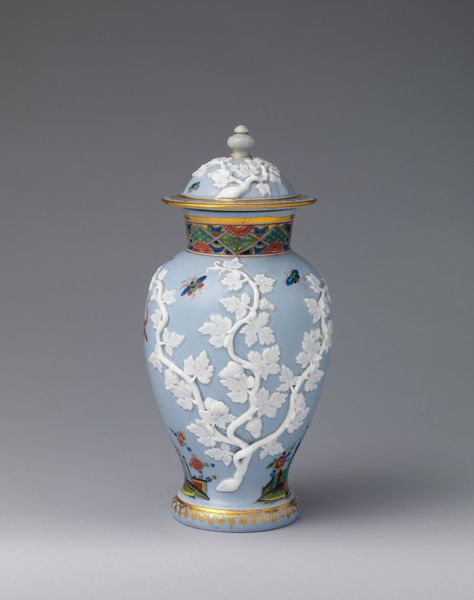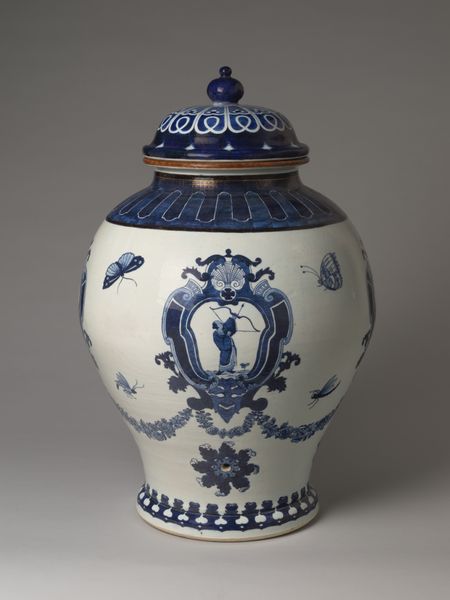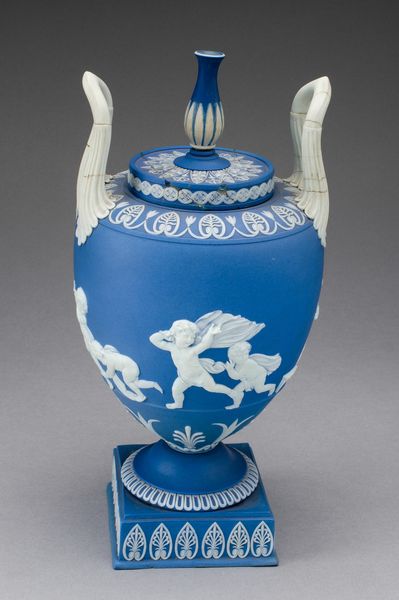
ceramic, porcelain, sculpture
#
asian-art
#
ceramic
#
porcelain
#
sculpture
#
decorative-art
#
rococo
Dimensions: confirmed: 16 15/16 × 5 3/4 × 5 3/4 in. (43 × 14.6 × 14.6 cm)
Copyright: Public Domain
Editor: This object, a porcelain vase with a cover created by the Meissen Manufactory between 1720 and 1730, showcases these stunning blue decorations on a white backdrop. The details are exquisite, though the elongated shape and busy imagery feel a bit overwhelming to my eye. How do you interpret the effect of these stylistic choices? Curator: It’s a fascinating object because it embodies cultural exchange and aspiration. Look closely at the imagery: what do you see evoked there? Editor: There seem to be figures in what appears to be a garden, with birds and foliage throughout. The aesthetic reminds me of Chinese pottery, even though I know it was made in Germany. Curator: Exactly! That Chinoiserie style was immensely popular at the time, fueled by trade with the East. European artists were captivated by the symbolism of Asian art but interpreted them through their own cultural lens. The garden setting might symbolize leisure and prosperity, but the European eye craved visual abundance, a desire to possess and display exotic knowledge. Do you think the form has symbolic significance too? Editor: I hadn’t considered that. The vase’s shape, so different from traditional European forms, seems like an appropriation as well. Curator: Indeed. Its elongated neck could mimic Asian vases, while its porcelain echoes the highly sought-after wares from China and Japan. This imitation became a symbol of status for the European elite. Editor: It’s almost like this single vase tells a story of global trade, artistic inspiration, and the development of European identity. Curator: Precisely! The object’s symbolic language creates an engaging interplay between cultures, which deepens our appreciation for the complex stories art carries.
Comments
No comments
Be the first to comment and join the conversation on the ultimate creative platform.


